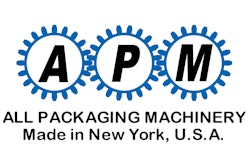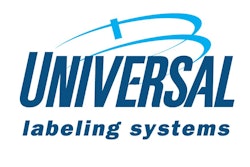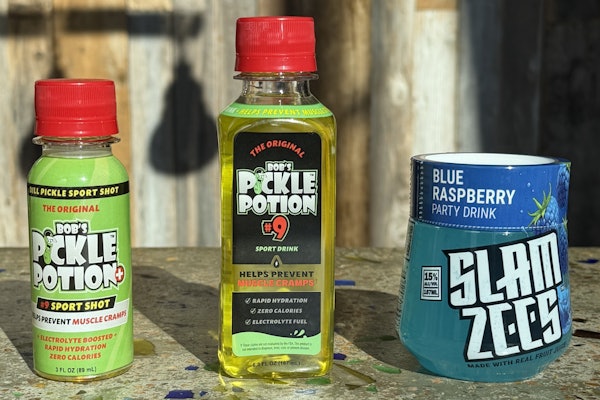A previous article in Contract Packaging magazine, “Bulldog-Mentality Changeover Tactics” (https://www.packworld.com/cp/go/c001), discussed the organizational side of changeover and how to improve it. This article will focus on how to modify machinery to make it more changeover-friendly.
Changeover improvement can be viewed as a three-step process:
1. Eliminate
2. Externalize
3. Simplify
Elimination simply means finding and getting rid of any unnecessary tasks. Externalization refers to when changeover tasks are being done. Those that must be done while the line is stopped are called internal (sometimes intrinsic) tasks. Tasks that can be done while the line is running are called external (sometimes extrinsic) tasks. Externalizing tasks doesn’t always reduce the number of labor hours necessary to making a changeover. In some cases, it might even increase them. What externalizing does do is require less downtime. Because labor time is measured in tens of dollars per hour and downtime is measured in thousands of dollars, the tradeoff is almost always a “no-brainer.” Finally, all the processes used must be made as simple and foolproof as possible.
The idea of elimination may, at first glance, seem nonsensical. Why would anyone want to do tasks that are not necessary? The truth of the matter is that some tasks can be eliminated at virtually all packaging plants. The trick is identifying them, and the way to do this is to ask “Why?” about everything. Following are two examples:
· Consider the location of a label on a shipper case. If the label is placed in the center of the case, every time the case size changes, the labeler needs to be changed. If the label can be placed in the same position, relative to the leading lower corner, no adjustment of the labeler is ever required, regardless of case or label size.
· Elimination is accomplished on a popular model of pouch former. A cam drives the cutoff blade on the machine mainshaft. As the machine comes from the factory, to adjust the pouch length, the machine base needs to be opened, the cam loosened with an Allen wrench, slid into the new position, and retightened. The cutoff blade then could be moved to its new position. A plant mechanic decided that there was no reason why the cam had to be 1/2” wide, so he made a new one about 4” wide. Now there is never a reason to open the machine or use a tool for adjustment. The operator simply loosens a hand lever on the top of the machine and slides the cutoff blade to the new position. The cam follower is always on the cam from shortest to longest pouch. A pocket scale glued to the machine shows the operator where to set the blade for each length.
First, eliminate
Never externalize or simplify any task that should not be done in the first place. Once all unnecessary tasks have been eliminated, the focus should turn to externalization. Cleaning is a good example of a task that often can be externalized. If additional liquid contact parts (pumps, hoses, valves, nozzles) are available for a liquid-filling machine, they can be swapped out quickly and the line restarted. Then, with the line running, they can be cleaned at leisure. One drawback may be the expense of additional parts. This challenge is usually quickly overcome by looking at costs and benefits. It may take an hour or more to remove, wash, and remount the same parts. A spare, previously cleaned set may cut the demounting and mounting time to 10 minutes. How much is 50 minutes of additional uptime per day (200 hours per year) worth? Probably much more than the cost of the additional parts.
Tasks that can’t be eliminated must be simplified. The first step is eliminating tools. Two reasons for taking this initial step: First, if tools are required, time may be spent looking for them or, worse, the wrong tool may be used and the machine damaged. Second, in some plants, company policy or labor agreements prohibit operators from using tools but permit them to perform tool-less tasks.
One of the simplest tool-elimination techniques is to replace all bolts, nuts, and other threaded fasteners with hand levers or hand knobs. These are available in a wide range of shapes, sizes, and styles, and it is almost always possible to find one that works. Safety orange makes a good color choice as it stands out and reminds the technician that it needs to be adjusted. As a general rule, hand levers should be used only where loosening is required. Handknobs should be used if removal is needed. The reason for this is partly ergonomic, but it is also a memory aid. When this practice can be standardized, it is no longer necessary to remember whether to remove or loosen a fastener. Loosening is always preferable as fully removed parts have a tendency to fall on the floor or get misplaced.
Other tool-less fastening techniques include pins, toggle clamps, pneumatic latches, and vacuum clamping.
Simplification in action
In many packaging applications, it is necessary to reposition photo-eyes and other sensors for different product sizes. It even may be necessary to recalibrate the photo-eye as the color or material of the package changes. These requirements can be simplified greatly by mounting multiple sensors, each permanently adjusted for a specific package and size. A selector switch can then be used to select the proper eye. No sensor repositioning is required.
The longest period of the change-over cycle often takes place after the changeover is complete. That is, the line is restarted and then hours, and sometimes, shifts, may be spent running at low efficiency and high package-reject levels. During this time, mechanics are tweaking the machine settings to get them just right.
The principle reason for this is that during changeover, adjustments were made by approximation, “eyeballing,” and feel rather than by measurement. One key to lean changeover is that it be done right the first time. This requires that all adjustments and settings be made precisely to a fixed value. Scales, scribe marks—digital indicators both mechanical and electronic—gauges, tachometers, and digital temperature indicators will all go a long way to achieving this precision. It is not enough to just mount the indicators. The actual set points for each adjustment for each product must be calculated and documented. Only then can a precise changeover be performed.
One initial challenge to achieving a lean changeover is getting started. Many people look at it, see a massive challenge, get scared, and never begin. Breaking changeover into smaller steps, eliminating, externalizing, and simplifying, makes it look more manageable.
Achieving lean changeover is simple, though it may not be easy. The key requirement is ruthless attention to detail. It consists of breaking changeover down into small tasks and then working on each one. Too many people look at changeover and see it as a 5-ton elephant.
There is an old saying that you can eat an elephant if you just cut it into small enough pieces. The same is true of changeover. Break it down into the two major paths of organization and machine design. Pick one path to work on first if resources don’t permit working on both simultaneously. Then divide it into smaller tasks. Examine each task and ask how it can be eliminated or, if that is not possible, how it can be externalized. If it can’t be eliminated or externalized, how can it be simplified?
Then, start implementing. A wonderful plan, without implementation, is nothing more than a good intention.
The author, John Henry, operates Changeover.com at www.changeover.com, specializing in reducing changeover times in packaging plants. Contact John at 787/863-9134 or [email protected].
See sidebar to this article: How externalization cut one company’s downtime 50%































